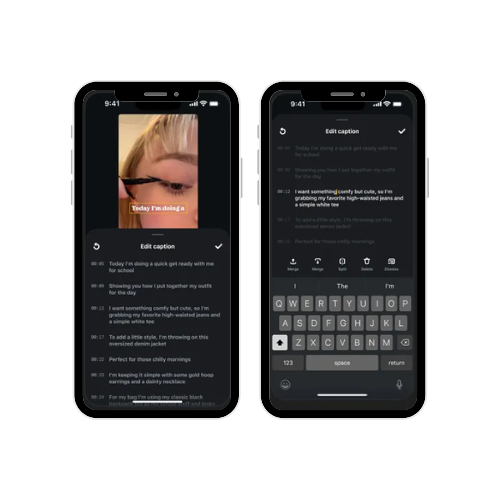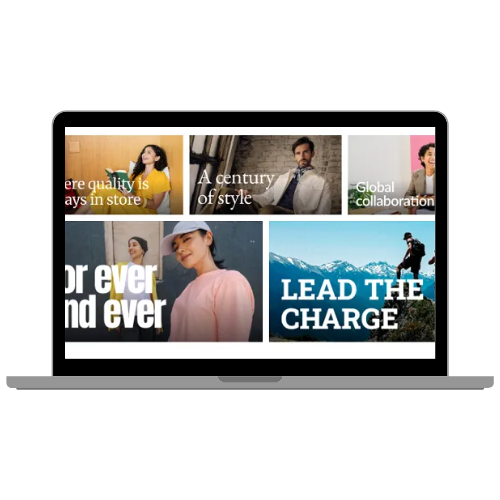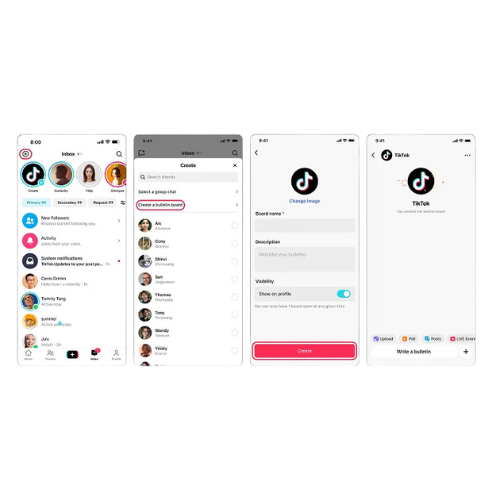November turned up the heat with some game‑changing digital marketing news for professional services. Meta’s AI Ads new generative ad targeting model which promises stronger results and lower ad fatigue. Google also rolled out AI‑powered creative tools for Demand Gen campaigns and a new Analytics Advisor that surfaces insights without the jargon. Meanwhile Pinterest dropped a trend‑driven gift guide and LinkedIn quietly upgraded its search. Here’s what you need to know – and how to make it work for you.
📍What’s new with Meta?
🔥 Meta AI Ads introduces the Generative Ads Recommendation Model (GEM)
Meta has rebuilt its ad targeting system using generative AI. Its new Generative Ads Recommendation Model (GEM) reads the full context of your ad and user journey, not just last‑click data. According to Meta, GEM is already 4× more efficient and doubles knowledge transfer compared with its previous model. For service‑based businesses juggling tight budgets, this means your ads could reach more qualified people while reducing wasted spend.
What’s new:
- Contextual learning: GEM reads the relationship between different signals across the customer journey, allowing it to predict intent more accurately and serve ads at the right time. Think of it like a matchmaker that learns everything about your perfect client so it can introduce you when the moment is right.
- Better knowledge transfer: Meta says the model can learn from one advertiser’s campaign and apply that learning to another similar campaign, speeding up optimisation for smaller advertisers.
- Integration with Lattice and Andromeda: The model works alongside Meta’s Lattice and Andromeda ranking systems to refine who sees what.
If you run Facebook or Instagram ads, now is a good time to revisit your audiences. The improved targeting may favour broader audiences combined with strong creative and clear conversion events. For local practitioners, this could reduce cost‑per‑lead as the system learns which signals truly matter. Keep your pixel and conversion events in order – the more data you feed GEM, the smarter it gets.
📔 Other noteworthy updates from Meta this month:
- Content protection for Reels: Facebook has introduced Content Protection for creators which scans your Reels for re‑use and notifies you if someone posts matching clip. You can block or track unauthorised uploads. For professionals sharing educational Reels, this helps safeguard your intellectual property.
- Marketplace gets AI tools: Facebook Marketplace now lets buyers organise listings into Collections, chat with sellers in Collaborative Buying groups, ask AI‑powered questions and see all‑in pricing including shipping and tax. While Marketplace isn’t core to most service businesses, it signals Meta’s push towards more conversational commerce.
- Retiring Like/Comment plugins: Meta will retire the Facebook Like and Comment buttons for third‑party websites in February 2026. If you still use these widgets on your website, plan to remove them soon.
- AI powers app promotion: Meta shared data showing that its improved AI targeting for app promotion campaigns now focuses on value optimization, delivering a 29% higher return on ad spend compared with optimizing for download volume. By analysing more data points and extending reattribution windows, the system finds more valuable users and reduces wasted impressions
- Lead‑gen gets smarter: Meta rolled out new enhancements for lead generation ads, including global availability of Advantage+ leads campaigns with AI‑powered targeting, SMS or email verification to filter out fake leads, and automated agents that nurture prospects. These updates promise lower cost per lead and better quality responses.
- Groups privacy switch: Facebook now lets group admins convert private groups to public, making new posts visible to everyone while keeping past content and member lists private. The change aims to help communities grow without sacrificing existing privacy.
👀 Tests Spotted on Meta this week:
- Threads podcast integration: Meta’s Threads app is testing a feature that lets podcasters add show details to their profile and share episodes with dedicated previews. This could become a useful distribution channel for B2B podcasts if rolled out widely.
Want to build a smarter ads funnel? Our team is helping service‑based clients refine their conversion tracking and creative for Meta’s Ads AI new model. Book a call to make the most of GEM.
📍What’s new with Instagram?
🔥 Instagram Edits app gets bulk caption editing and new effects
Short‑form video continues to dominate, and Meta’s Edits app just made it easier to produce accessible, polished clips. You can now animate still photos, reverse footage, add over 400 sound effects and lip‑sync audio. More importantly, there’s a new caption editor that lets you view and edit the entire transcript in one screen. For service businesses using Reels to educate clients, accurate captions are non‑negotiable – they boost accessibility and SEO.
What’s new:
- Animation & effects: Turn static images into dynamic clips and apply Boomerang‑style reverse effects.
- Hundreds of sound effects & lip‑sync: Add personality or create voiceovers by animating still images to match your narration.
- Bulk caption editing: Review and adjust your whole caption transcript on one screen, speeding up proofing.
Treat captions like a mini blog post – they’re a chance to embed keywords and context for your viewers. With easier editing, you can create inclusive content without spending hours tweaking auto‑captions. Use the animation tools sparingly; clarity always trumps gimmicks.

📔 Other noteworthy updates from Instagram this month:
- Content protection for Reels: While technically a Facebook feature, the new Content Protection system scans both Facebook and Instagram Reels for re‑use. Protect your most valuable clips.
- Competitive Insights for professional accounts: Instagram has added a Competitive Insights option to the Professional Dashboard, allowing business and creator accounts to compare follower growth and posting frequency with up to 10 other accounts. It offers basic side‑by‑side metrics across Reels, posts and ads but lacks deeper engagement or conversion data, so treat it as a high‑level benchmark rather than a strategy driver.
Need help turning thought‑leadership into thumb‑stopping Reels? Our content team can script, film and edit educational Reels that respect your time and your audience. Let’s talk.
📍What’s new with Google?
🔥 Google Demand Gen campaigns get AI‑powered image and video tools
Google’s Demand Gen campaigns are a powerful tool for reaching people across YouTube, Discover and Gmail. Now Google has added a suite of AI‑powered creative enhancements that streamline asset creation and testing. For service‑based advertisers, this means faster iteration and more engaging ads.
What’s new:
- Animated and adaptable images: Google can now generate Animated images and adjust creatives to fit different placements automatically. This reduces the need for multiple size variants.
- Video enhancement & remix: You can upload a single video and let Google create vertical or square versions and shorter cuts for YouTube Shorts.
- A/B testing experiments: Run experiments to compare messaging or creatives and let Google optimise for the winning asset.
- Suitability controls & Pathmatics integration: More granular brand safety controls and the option to use third‑party creative assets through Pathmatics.
This update lowers the barrier to entry for polished creative. However, AI is only as good as your brief; provide clear direction on tone and audience. Use the experiments feature to test headlines or testimonials rather than leaving everything to the algorithm.

📔 Other noteworthy updates from Google this month:
- Analytics Advisor (powered by Gemini): A new AI assistant in Google Analytics lets you ask natural‑language questions and receive actionable insights. It can suggest better configurations and recommend reports. A useful tool for busy marketers who need quick answers.
- Gemini Deep Research integration: Google’s Deep Research tool can now pull data directly from your Gmail, Drive and Chat to build comprehensive reports. This is helpful for competitor analysis or preparing market research using your own documents.
- Gemini in Google Maps: Google Maps is rolling out hands‑free, conversational navigation, landmark‑based guidance, proactive traffic alerts and Lens powered by Gemini. Although more consumer‑focused, it indicates how AI will soon filter into all Google products.
- Google adds “Sponsored results” label: Google Search now groups text ads under a persistent “Sponsored results” label and introduces a “Hide sponsored results” option. . This makes it clearer which listings are ads and lets users collapse them, so focus on organic SEO even as you fine‑tune ad copy.
- Display & Video 360 enhances CTV targeting: Google’s Display & Video 360 is upgrading its connected TV ad solutions to target households based on demographics, shared interests or purchase intent. It’s also adding household‑level reach metrics and improved conversion measurement across devices. While more relevant to larger budgets, it signals deeper household‑level targeting and measurement.
👀 Tests Spotted on Google this week:
- Journey Aware Bidding: Google is testing a new search bidding model that uses signals from the entire customer journey rather than just the final conversion. It’s a closed pilot, so there’s nothing to action yet, but it’s worth watching.
- Post scheduling for Google Business Profiles: Google is experimenting with a “Schedule this post” toggle in Google Business Profiles, which would let businesses choose when their Google Posts go live. This has been spotted by a few users but isn’t widely available.
Want to upgrade your Google campaigns? We can design and test demand‑gen assets that resonate with your ideal clients. Get in touch for a bespoke strategy.
📍What’s new with Pinterest?
🔥 Pinterest unveils trend‑driven gift guides
Pinterest released a Festive Season Edit featuring hundreds of gift guides curated by experts, celebrities and trend data. While this update leans towards ecommerce, it signals how Pinterest is positioning itself as a shopping destination and using its search data to influence purchasing.
What’s new:
- Celebrity and expert collections: Gift lists are curated by celebrities like Pamela Anderson and the Jonas Brothers alongside Pinterest trend experts.
- Trend insights: Pinterest highlights trending search terms like “funky mug” (+330%) and “spiral candle” (+180%).
- Interactive gifting quiz & deals: Users can take a quiz to find gift ideas and browse festive deals.
For professional service brands, this update is more of a consumer bellwether than a tactical change. It shows how platforms leverage first‑party data to curate experiences. If you sell physical products as an add‑on (e.g., wellness bundles or branded merchandise), aligning gift‑ready packages with trending searches could improve visibility. Otherwise, treat this as inspiration for how to package your own services.
📍What’s new with TikTok?
🔥 TikTok launches Bulletin Boards for creators
TikTok’s new Bulletin Boards allow creators with 50K+ followers to send broadcast messages to their followers. Messages can include text, images or short videos and appear as notifications. It’s similar to Instagram’s Broadcast Channels.
Service‑based brands may not meet the follower threshold yet, but the feature hints at TikTok prioritising creator‑audience communication. If you’re building an audience there, start nurturing one‑to‑many conversations now – your future followers will appreciate the personal touch.

📔 Other noteworthy updates from TikTok this month:
- Generative AI creation tools: TikTok is rolling out new generative AI options built into its composer, including image‑to‑video and text‑to‑video generation and AI‑powered transitions. These tools animate still images or generate clips from prompts and were previously only available to advertisers. They offer creative possibilities but could contribute to feed fatigue if over‑used.
- AI assistance & subscription share: TikTok introduced Smart Split, which automatically slices long videos into short clips, and AI Outline, which suggests titles, hashtags and hooks based on trending content. The platform also increased subscription revenue share to up to 90% for North American creators. Together, these tools help creators repurpose content and monetise communities more efficiently.
📍What’s new with LinkedIn?
🔥 LinkedIn adds AI‑powered conversational search
LinkedIn has introduced AI conversational search, allowing Premium subscribers to use natural‑language queries to find people, posts and companies. You can ask questions like “Ex‑coworkers who became founders in healthcare in Melbourne” and get personalised results. This makes discovering potential partners, mentors or clients faster.
This tool will help you identify new connections without endless filtering. Use it to map referral networks or identify speakers for your next event. Remember that results are only as good as your profile – optimise your keywords and job history to surface in relevant searches.

📔 Other noteworthy updates or tests:
- Reddit introduces interactive ads: Reddit launched ad units that let brands create mini‑games, quizzes and countdowns within ads. While the community may be sceptical, interactive experiences could help professional services stand out if used tastefully.
- YouTube Hype and member filters: YouTube added a Hype program with leaderboards and the ability to highlight videos you’ve hyped, plus new filters to view members‑only or public content. If you run a membership, this could improve how you promote exclusive content.
- YouTube payment summary error & ad‑blocker crackdown: Some creators saw inflated payment summaries due to a system error, and YouTube is making the site unusable for viewers with ad blockers. Keep an eye on your AdSense reports and consider reminding clients about the value of ad‑supported content.
- OpenAI group chats: OpenAI opened up group chats in ChatGPT, allowing teams to collaborate in one chat thread. Useful for brainstorming copy or strategy, though not directly a marketing channel.
- Canva’s product launches: Canva teased its biggest product launches yet, spanning AI, video and email design. While details are sparse, expect new tools that simplify content creation for small businesses.
- Grammarly rebrands as Superhuman: Grammarly has rebranded its company to Superhuman and launched a suite that includes Grammarly’s writing assistant, Coda’s all‑in‑one workspace, Superhuman Mail’s AI‑native inbox and a new Superhuman Go assistant. Superhuman Go delivers proactive AI agents that fetch information, schedule meetings and draft messages across all your apps. It’s a glimpse into how AI agents will soon streamline workflow beyond marketing.
November’s digital updates were a tale of two AIs: Meta’s Generative Ads Recommendation Model promises more effective ad targeting, while Google’s AI‑powered creative tools signal a new era of automated asset creation. These changes underscore a common theme – platforms are leaning into machine learning to simplify decision‑making and amplify relevance. For service‑based professionals, now is the time to ensure your data is clean, your stories are clear and your content is human at heart. Automation can only amplify what’s already there. If you’d like help aligning your marketing with these shifts, we’re here to guide you every step of the way.
Feel free to sign up for our weekly updates here (plus so much more hot goss) so you never miss the best updates. AND don’t forget, if you do miss out you can always go back to last weeks blog posts here.
XOXO
Oh My Digital Team
